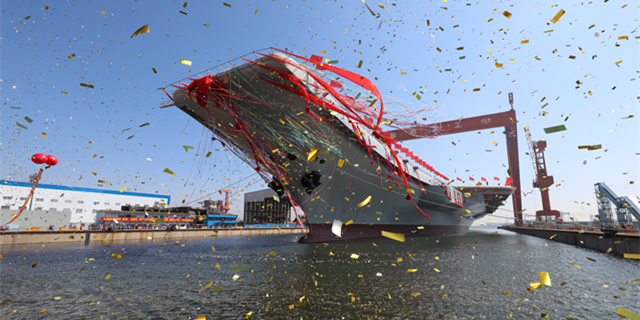China manufacturing powers ahead on innovation
BEIJING - Li Shaohua saw his engine manufacturing company recovering faster than he had expected, thanks to innovation and more outlays on new product design.
Weichai Power staged a comeback last year with its business revenue rising 25.6 percent year on year to 93.2 billion yuan ($13.5 billion) and net profit surging 72.9 percent to 2.4 billion yuan.
In 2015, life was much more difficult for the Shenzhen-listed company and its parent group, with more than 74,000 employees on its payroll.
Stringent environmental protection requirements on engine emissions and low demand, especially weaker sales of engines for heavy-duty trucks, weighed on Weichai Power, with revenue dipping 7.4 percent in 2015 and profits plunging 72.2 percent.
"The only way for Chinese manufacturers like us to thrive is through innovation and higher quality products," said Li, vice president of the company.
Despite cash flow constraints, the company spent 3.6 billion yuan on research and development in 2016, 9.5 percent more than in 2015, working on new energy vehicles (NEVs), lowering emissions, and producing greener and more reliable engines.
Weichai Power's transition is testimony to Chinese manufacturers' ascent of the value chain and economic restructuring.
In a similar vein, research and development expenditure across China rose 9.4 percent last year to 1.55 trillion yuan, just over 2 percent of the GDP, official data showed.
"China's transition to slower but structurally rebalanced growth continues," the World Bank said in a report earlier this month, noting that economic growth will continue to moderate as capacity is cut and credit kept on a tight leash.
Industrial output growth in the hi-tech manufacturing sector reached 13.4 percent in Q1 this year, outstripping the 6.8-percent registered across all industrial companies.
Growth of traditional manufacturers is picking up, with emerging sectors like robots, NEVs and the sharing economy doing well, said Ning Jizhe, head of the National Bureau of Statistics (NBS).
Innovation is critical. "The ongoing supply-side structural reform will force Chinese businesses to sharpen competitiveness and improve overall growth quality, although the process will be painful," said Cai Zhizhou of Peking University.
Cutting overcapacity, deleveraging, lowering costs, reducing inventories and strengthening weak links of businesses to will generate sustainable long-term growth.
"The Chinese economy can upgrade gradually while tackling existing problems and alleviating risks," Ning said.
China's manufacturers face a downshift in growth, structural adjustment and a shift in growth engines, according to Miao Wei, minister of industry and information technology, earlier this week.
China will upgrade its manufacturing industry with new policies to optimize the investment environment and support development of advanced manufacturing, Miao said.
Industrial upgrading and increasing productivity will take many years of reforms, instead of being achieved overnight, cautioned Zhao Yuncheng, a senior official at NBS.
















